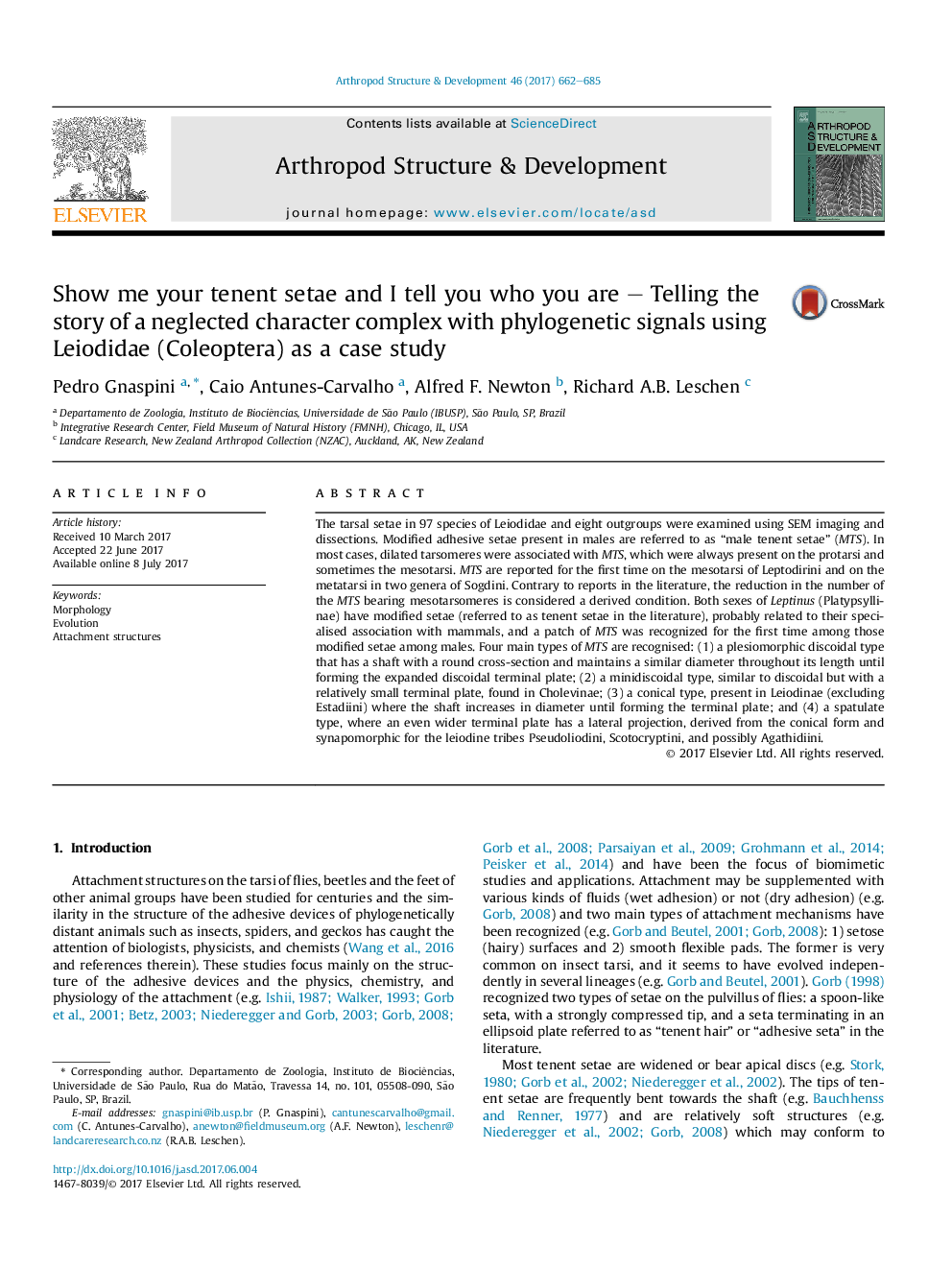| Article ID | Journal | Published Year | Pages | File Type |
|---|---|---|---|---|
| 5585043 | Arthropod Structure & Development | 2017 | 24 Pages |
Abstract
The tarsal setae in 97 species of Leiodidae and eight outgroups were examined using SEM imaging and dissections. Modified adhesive setae present in males are referred to as “male tenent setae” (MTS). In most cases, dilated tarsomeres were associated with MTS, which were always present on the protarsi and sometimes the mesotarsi. MTS are reported for the first time on the mesotarsi of Leptodirini and on the metatarsi in two genera of Sogdini. Contrary to reports in the literature, the reduction in the number of the MTS bearing mesotarsomeres is considered a derived condition. Both sexes of Leptinus (Platypsyllinae) have modified setae (referred to as tenent setae in the literature), probably related to their specialised association with mammals, and a patch of MTS was recognized for the first time among those modified setae among males. Four main types of MTS are recognised: (1) a plesiomorphic discoidal type that has a shaft with a round cross-section and maintains a similar diameter throughout its length until forming the expanded discoidal terminal plate; (2) a minidiscoidal type, similar to discoidal but with a relatively small terminal plate, found in Cholevinae; (3) a conical type, present in Leiodinae (excluding Estadiini) where the shaft increases in diameter until forming the terminal plate; and (4) a spatulate type, where an even wider terminal plate has a lateral projection, derived from the conical form and synapomorphic for the leiodine tribes Pseudoliodini, Scotocryptini, and possibly Agathidiini.
Keywords
Related Topics
Life Sciences
Agricultural and Biological Sciences
Insect Science
Authors
Pedro Gnaspini, Caio Antunes-Carvalho, Alfred F. Newton, Richard A.B. Leschen,
